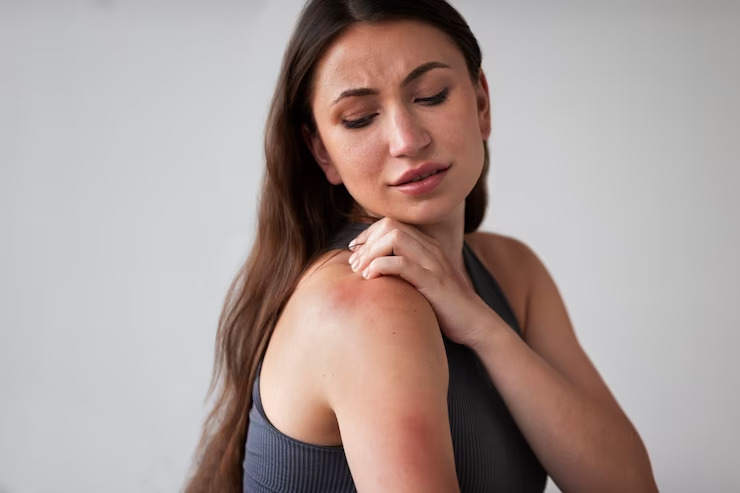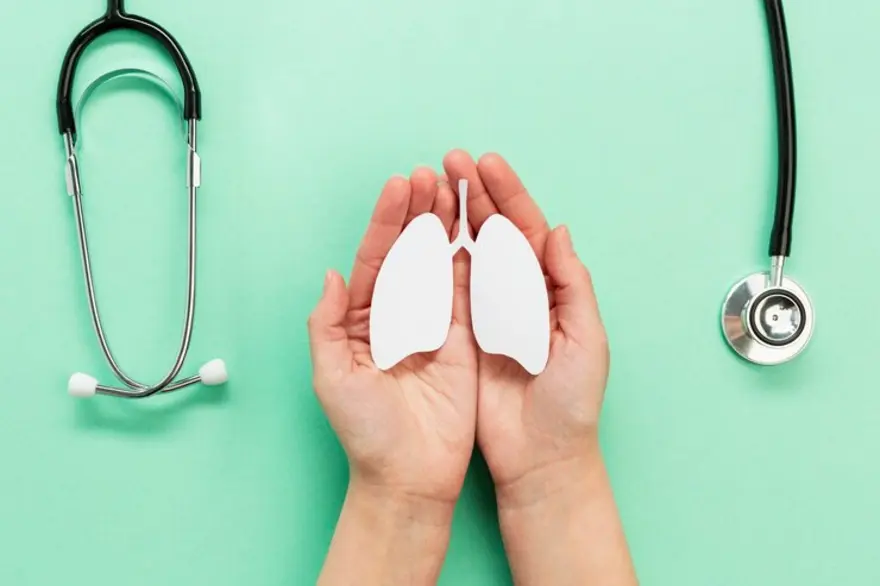Preventive Healthcare
Heat Rash - Types, Symptoms, Causes and Treatment
2961 Views
0

Summer is here and with it comes heat rash. Like most people, this can be a real annoyance to you too. Heat rashes are red and itchy and make you want to scratch your skin off! But fear not - there are plenty of ways to prevent and treat these irritating bumps. In this blog post, we will go over everything you need to know about heat rashes: what they are, do heat rashes itch, how to avoid them in the first place and how to get rid of them if they do show up again.
What Is a Heat Rash?
A heat rash is a skin condition that can occur when the sweat glands become blocked and sweat cannot escape. The resulting trapped sweat causes a heat rash on the skin. Heat rashes are common in hot, humid weather and usually appear on the face, neck, chest or back. They can range from mild to severe and often go away on their own within a few days. However, if the rash persists or is accompanied by fever, chills or other symptoms, it may be necessary to see a doctor.
Types of Heat Rashes
There are three types of heat rashes, which are listed below:
1. Miliaria Crystallina: This type of heat rash looks like clear, fluid-filled blisters. It is the mildest form of heat rash and is often seen in newborns.
2. Miliaria Rubra: This type of heat rash looks like red, itchy bumps. It is more common in adults and often occurs after sweating during exercise or other activities.
3. Miliaria Profunda: This is the most severe form of heat rash. It can cause deep, painful blistering and usually occurs in adults who are obese or have diabetes.
Symptoms of Heat Rash
If you have a heat rash, you might notice small bumps on your skin that are red, itchy and uncomfortable. You might also feel a burning sensation. Heat rash on the skin is a common reaction to hot weather. It can happen to anyone, but it is most common in young children and people who sweat a lot. The following are a few different symptoms of heat rash.
Itching
If you are wondering whether heat rashes itch, the feeling of itchiness or prickling on the skin is the most common symptom of skin rashes. This can be felt the most during bathing or wearing clothes. Many resort to prickly heat powders or bathing in cold water. However, these might not always be helpful.
Tiny Bumps
A red raised rash that is made up of tiny bumps is another strong symptom of heat rash. These bumps can be mild to moderately painful.
Blisters
If you suspect you have been a victim of heat rash, then keep an eye out for blisters. In severe cases, blisters on the skin may also ooze clear fluid.
Swelling and Pain
Swelling and pain in the affected area are quite common during the onset of skin rashes. These symptoms usually subside within a couple of days. If not, it is time to visit a doctor.
Causes of Heat Rash
There are several reasons why you might develop a heat rash, but the most common cause is sweat. When your sweat glands become blocked, the sweat cannot evaporate, which can result in irritation. The other causes of heat rash are listed below.
Wearing Tight Clothes
Wearing tight clothing that does not allow your skin to breathe causes your body to sweat more and causes clogged pores. This leads to skin rashes.
Exposure to Humid Conditions
Being in a humid or moist environment for a long period leads to profuse sweating. This is a
another common cause of heat rash.
Unhygienic Habits
Unhygienic habits like not bathing regularly, wearing dirty clothes, etc., can cause heat rashes on the skin.
Treatment for Heat Rash
Keep Yourself Away from the Hot Environment: If you have a heat rash, the first thing you should do is move to a cooler environment. This will prevent your body from sweating further and facilitate faster healing.
Try to Wear Loose Clothes: If you cannot do that, remove any clothing that is making you sweat and use a fan to cool your skin.
Apply Lotion/Body Talc: Apply calamine lotion or hydrocortisone cream to the affected area. If your rash is particularly severe, you may need to take an antihistamine like Benadryl.
Stay Hydrated: Heat rash not only occurs due to hot climate but also dehydration. So make sure you are staying hydrated by drinking plenty of fluids.
Prevention of Heat Rash
Prevention is always better than cure. Read the following points to learn how to prevent heat rash.
- Keep your skin cool and dry. Avoid overheating and sweating.
- Wear loose, breathable clothing. Natural fabrics like cotton are best.
- Avoid tight clothing that does not allow your skin to breathe.
- Stay out of the sun and heat as much as possible.
When to See a Doctor for a Heat Rash?
If you have a heat rash, you should see a doctor if the rash is severe, if you have a fever or if the rash does not go away within a few days. You should also see a doctor if the rash is on your face or in your groin area. If you have any of these symptoms, you should see a doctor right away.
Heat rashes are an uncomfortable problem that can affect anyone, anywhere. Understanding the causes and symptoms of heat rash is essential to being able to treat it properly. Knowing how to recognize and take steps to prevent heat rash will help you avoid this skin condition in the future.
You can also book a home visit at Metropolis Labs and get your blood samples collected by professional technicians when testing is advised for heat rashes.
By following the above-mentioned tips, you should be well-equipped with all the information necessary for treating and avoiding a heat rash in the future.
 Home Visit
Home Visit Upload
Upload














1701259759.webp)









 WhatsApp
WhatsApp